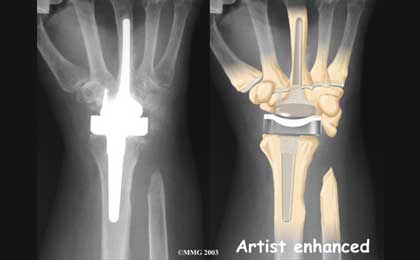Joint Replacement is a surgical procedure that replaces damaged joints, which are generally the result of a degenerative joint condition such as arthritis. These joints are replaced with either artificial joint implants or a tendon from your own body.
The type of joint replaced will determine the type of implant used. Basilar joint arthritis (arthritis of the thumb) may be restored using a tendon from your body. A number of different joint replacement systems comprised of different types of material exist (titanium, silicone, metallic pyrocarbon, etc.). Joint replacement systems today are more refined than ever before and closely mimic the contours and the movement of the joint for which they are designed. In some cases, there are even “gender-specific” joint replacement systems available – as research has identified subtle differences in the male and female skeleton and manner in which each move.
The right joint replacement system is matched to each joint and each patient.
Joint replacement surgery is considered only once all other less invasive treatment options are exhausted and quality of life becomes progressively diminished. The small joints of the hand, wrist and elbow require the unique skills of a surgeon who specializes in the hand and upper extremity.
Recovery and resumption of activity following joint replacement surgery depends on each individual. An occupational therapist will work closely with you to build an exercise plan for your specific needs – working towards recovery and full resumption of joint function.


